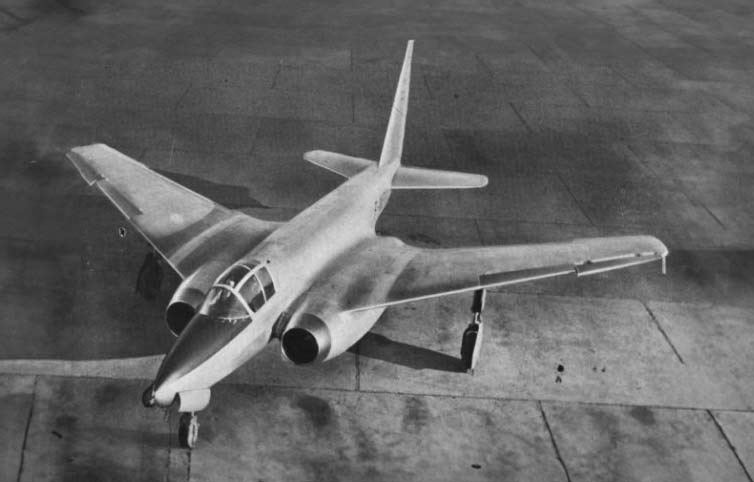The Nord 1601 was a French experimental aircraft of the late 1940s, featuring a unique push-pull engine configuration.
In brief
The Nord 1601, developed in France in the late 1940s, was an experimental aircraft distinguished by its unconventional push-pull engine arrangement. This design was primarily aimed at reducing aerodynamic drag and enhancing performance. As a single-seat, low-wing monoplane, the Nord 1601 served as a testbed for exploring the aerodynamic efficiencies and flight characteristics of this engine configuration. Although it did not advance to production or widespread use, the Nord 1601 contributed valuable data to the understanding of aircraft design and propulsion systems. Its development occurred during a period of significant innovation in aviation, where various design philosophies were being tested to optimize aircraft performance in the burgeoning jet age.
The Nord 1601 stands as an intriguing example of post-World War II aviation experimentation, showcasing unique design approaches in a time of rapid technological advancement.
History of the Development of the Nord 1601
In the aftermath of World War II, the aviation industry experienced a surge in technological innovation. This era saw a myriad of experimental designs as manufacturers and designers sought to explore new concepts and improve aircraft performance. The Nord 1601 was developed within this context of exploration and innovation.
The project was initiated by the French manufacturer Nord Aviation, known for its focus on innovative and sometimes unconventional aircraft designs. The primary objective of the Nord 1601 was to investigate the aerodynamic and performance implications of a push-pull engine configuration. This setup involved one engine at the front and another at the rear of the aircraft, theoretically offering reduced drag and improved efficiency.
The Nord 1601 program was launched in the late 1940s, with the first flight occurring on 29 November 1949. The aircraft did not have a NATO nickname, as it was a unique, one-off experimental project rather than a production model.
Design of the Nord 1601
The design of the Nord 1601 was driven by the goal of reducing aerodynamic drag and optimizing propulsion efficiency. The aircraft featured a push-pull engine configuration, with a Renault 12S piston engine at the front and another at the rear. This setup aimed to achieve a streamlined profile and reduce parasitic drag.
The aircraft was constructed primarily of metal, with a low-wing monoplane layout. It had a length of approximately 8.85 meters (29 feet) and a wingspan of around 11 meters (36 feet). The unique engine placement required careful consideration of weight distribution, structural integrity, and aerodynamics.
One of the advantages of the Nord 1601’s design was the potential for improved aerodynamic efficiency compared to conventional single-engine aircraft. However, the push-pull configuration also presented several challenges, including complexity in engine synchronization, cooling, and maintenance. Additionally, the rear engine’s placement posed risks in the event of a rear engine failure, potentially leading to control issues.

Performance of the Nord 1601
The performance of the Nord 1601 was central to its experimental role. The twin Renault 12S engines, each producing approximately 140 horsepower, were intended to provide a balance of power and efficiency. The aircraft’s top speed, rate of climb, and service ceiling were focus areas of the test flights, although specific performance data from these tests is not widely documented.
Compared to other experimental aircraft of the era, the Nord 1601’s push-pull configuration was unique, making direct performance comparisons challenging. The design philosophy it embodied was more about exploring new possibilities in aircraft design rather than competing with existing aircraft for operational roles.
Variants of the Nord 1601
The Nord 1601 was produced as a singular prototype and did not have multiple variants. Its development and testing were focused on evaluating the specific design concept of the push-pull engine configuration.
Military Use and Combat of the Nord 1601
The Nord 1601 was never used in a military or combat role, as its purpose was purely experimental. It was designed to provide insights and data on its unique configuration rather than to fulfill operational military requirements. As such, the Nord 1601 did not carry armaments, participate in combat missions, or get exported to other countries.
The aircraft’s legacy lies in its contribution to the body of knowledge regarding aircraft design and propulsion systems, influencing future aviation developments in more indirect ways.
The Nord 1601 represents a fascinating facet of aviation history, reflecting the innovative spirit and exploratory nature of aircraft design in the post-WWII era. While it did not lead to a specific line of operational aircraft, the lessons learned from its development provided valuable insights into alternative propulsion configurations and aerodynamic efficiency, contributing to the broader evolution of aviation technology.
Back to the experimental aircraft section.